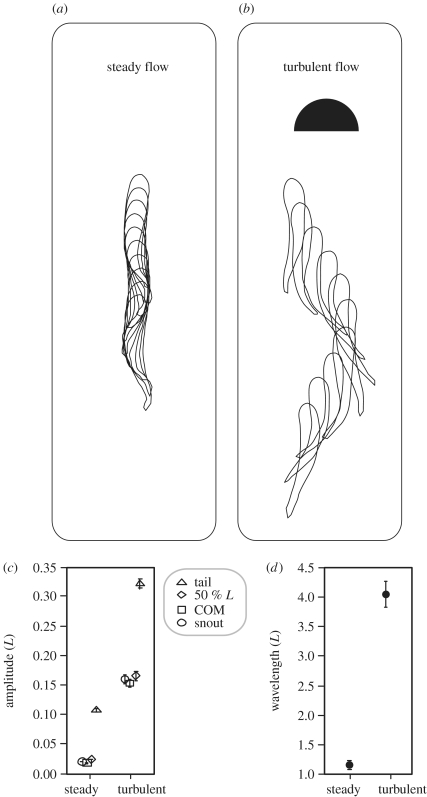Figure 1.
Turbulent flow can drastically alter swimming motions by deforming as well as translating the body (see text for discussion). Silhouette outlines for a 10 cm trout (standard length, L) swimming in: (a) a 45 cm s−1 steady current versus (b) turbulent flow created behind a 5 cm diameter cylinder. Ten body outlines for each treatment are shown for approximately one tail-beat cycle, illustrating the differences in body position relative to the earth frame of reference as well as body postures relative to the fish frame of reference. Although the lateral amplitude of selected points along the body is similar in pattern between swimming in steady and turbulent flow (c), the absolute amplitude values relative to the earth frame of reference are larger for fish in turbulence due to the lateral translation of the body by vortices (Liao et al. 2003b). In addition to displacing the body, turbulence can also generate body deformations (i.e. influence body kinematics), as evidenced by longer body wavelengths (d). Standard error bars are shown.

